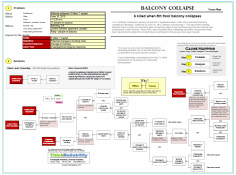By Kim Smiley
Five people were killed and dozens more injured when an amphibious Ride the Ducks tour boat collided with a charter bus in Seattle on September 24, 2015. The circumstances of the accident were particularly unfortunate because two large vehicles carrying tour groups across a busy bridge were involved. Traffic was mangled for hours as emergency responders worked to treat the high number of victims, investigate the accident and clear the roadway.
 The National Transportation Safety Board (NTSB) is investigating the accident to determine exactly what led to the collision and if there are lessons learned that could help reduce the risk of a similar crash in the future. Potential issues with the duck boat are some of the early focuses of the investigation. In case you are unfamiliar, duck boats are amphibious landing craft that were used by the U.S. Army during World War II that have been refurbished for use as tour vehicles that can travel on both water and land to give visitors a unique way to experience a city. Their military designation DUKW was changed to the more user-friendly duck boat moniker that is used by many tour companies throughout the world.
The National Transportation Safety Board (NTSB) is investigating the accident to determine exactly what led to the collision and if there are lessons learned that could help reduce the risk of a similar crash in the future. Potential issues with the duck boat are some of the early focuses of the investigation. In case you are unfamiliar, duck boats are amphibious landing craft that were used by the U.S. Army during World War II that have been refurbished for use as tour vehicles that can travel on both water and land to give visitors a unique way to experience a city. Their military designation DUKW was changed to the more user-friendly duck boat moniker that is used by many tour companies throughout the world.
Eyewitnesses of the accident have reported that the duck boat unexpectedly swerved while crossing the bridge, slamming into the driver’s side of the tour bus. Reports are that the left front wheel of the duck boat locked up and the driver lost control of the vehicle. NTSB investigators have stated that the duck boat didn’t have a recommended axle repair done that was recommended in 2013 and that they are working to determine whether or not this played a role in the accident.
Investigators are also looking into whether or not Seattle Ride the Ducks was notified of the repair. Photos of the wrecked duck boat show that the front axle sheared and the left wheel popped off the vehicle, but it hasn’t been conclusively determined whether the damage was the cause of the accident or occurred during the accident. The issues with the axle certainly seem like a smoking gun, but a thorough investigation still needs to be performed and the process will take up to a year. If there was a mechanical failure on the duck boat unrelated to the already identified axle issue, that will need to be identified and reviewed to see if it applies to other duck tour vehicles.
This severity of this accident is raising concerns about the overall safety of duck tours. The duck boat involved in this accident underwent regular annual inspections and was found to meet federal standards. If a mechanical failure was in fact involved, hard questions about the adequacy of standards and inspections will need to be asked. The issue of the recommended repair that was not done also raises questions about how the recommendations are passed along to companies running duck boat tours as well as incorporated into inspection standards.
Click on “Download PDF” above to see an outline and Cause Map of this issue.









